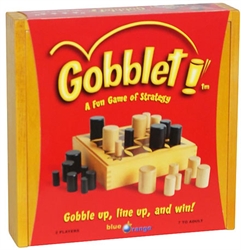


To summarize, am I thinking in the right way or am I missing something easy? If I'm on the right track, how do I combine a strategy pattern and a template method pattern?Īfter looking at your designs, both your first and third iterations appear to be more elegant designs. As a consequence, the TurnTemplate class would no longer be abstract but would have to become concrete, is it then still a template method pattern? In my protected methods in the TurnTemplate I could just call termineWinner(). The 'problem' that then surfaces is that I would never need my concrete implementations of the TurnTemplate, these classes would become obsolete. The only way I feel I can still use the template method pattern with this is to pass this RuleSet object to my TurnTemplate. Let's say that I use the strategy + abstract factory pattern and I have a RuleSet object which has algorithms for the three rules in it. and they would create the correct instances of the rules and hand me back a RuleSet object. I would then have a MancalaRuleFactory, WariRuleFactory, etc. I also can't determine who would be responsible for creating the TurnTemplate object, whereas with the strategy pattern I feel I have families of objects (the three rules) which I could easily create using an abstract factory pattern. I don't really see the design difference between the strategy pattern and this? But I am certain I need to use a template method (although I was just as sure about having to use a strategy pattern). One possible solution I found would be to abandon the strategy pattern and do the following: I'm having a lot of trouble combining these two. Those three last steps are all in my strategy pattern described above. if the game has finished, determine who has won.determine if the game has finished because of the previous move.deposit stones in holes (this is the same for all games, so would be implemented in the template method itself).The actions that are done when a user makes a move are always the same, and in the same order, namely: In reading about the template method pattern I immediately thought it could be applied to this problem.

But the real problem comes when I want to design it further. I think the implementation of these rules as a strategy pattern is certainly valid. WinnerDeterminer and if there's a Mancala 2.0 version which is the same as Mancala 1.0 except for how the winner is determined it can just use the Mancala versions. ) would just have attribute of the type of each rule's interface, i.e. Nevertheless from the feedback I got from my professor I got the impression to find a different design.Įach game (Mancala, Wari, Kalah. I don't think this is by definition a violation of the 'one rule, one place' or DRY principle seeing as a change in rules for Mancala wouldn't automatically mean that rule should be changed in Wari as well.
Mancala strategy going second code#
I then thought to myself that in the game of Mancala and Wari the way the winner is determined is exactly the same and the code would be duplicated. The first thing that came to my mind to design this was to use the strategy pattern, I have a variation in algorithms (the actual rules of the game). The way in which the winner is determined.The way in which the end of the game is determined.The way in which the result of a move is handled.These games differ in some aspects but for my question it's only important to know that the games could differ in the following: The game in question is Mancala, some of these games are called Wari or Kalah.
Mancala strategy going second software#
An assignment in my software engineering class is to design an application which can play different forms a particular game.


 0 kommentar(er)
0 kommentar(er)
